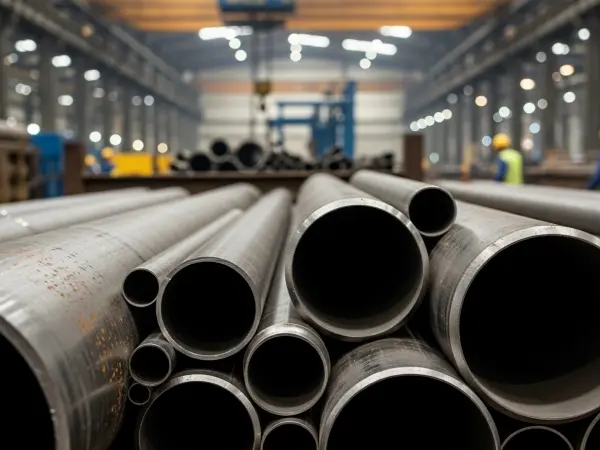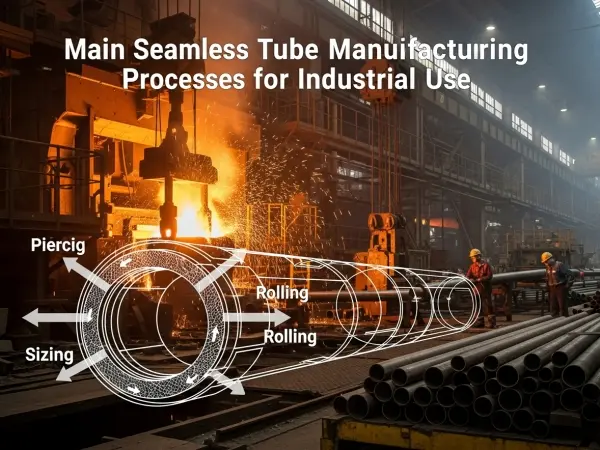
The oil and gas industry operates in some of the most demanding environments on Earth, requiring infrastructure that can withstand extreme pressures, corrosive substances, and temperature variations. At the heart of this critical infrastructure is the seamless pipe for oil and gas industry, a fundamental component that ensures safe and efficient operations.
This comprehensive guide explores why seamless pipes are indispensable in oil and gas applications, their key advantages over welded alternatives, material considerations, industry standards, and best practices for selection and maintenance.
Unlike welded pipes, which have a visible seam that can be a potential weak point, seamless pipes for the oil and gas industry are manufactured through extrusion or rotary piercing, creating a uniform structure without joints. This makes them ideal for critical applications where failure is not an option.
1. Superior Strength & Pressure Resistance
· Seamless pipes can handle extremely high pressures, making them perfect for deep-water drilling, high-pressure pipelines, and hydraulic fracturing (fracking).
· The absence of welds eliminates weak points that could fail under stress.
2. Enhanced Corrosion & Wear Resistance
· Made from high-grade carbon steel, alloy steel, or stainless steel, seamless pipes resist corrosion from sour gas (H₂S), CO₂, and saltwater.
· Ideal for offshore rigs, subsea pipelines, and refineries where exposure to harsh elements is constant.
3. Better Flow Efficiency
· The smooth internal surface reduces turbulence and friction, improving fluid dynamics and lowering pumping costs.
· Critical for long-distance pipelines where energy efficiency impacts operational costs.
4. Higher Temperature Tolerance
· Seamless pipes maintain structural integrity in extreme heat (e.g., steam injection for enhanced oil recovery) and cryogenic conditions (LNG transport).
5. Longer Lifespan & Lower Maintenance Costs
· Fewer leaks and ruptures mean reduced downtime and repair expenses.
· A well-maintained seamless pipe can last decades, even in aggressive environments.
The seamless pipe for oil and gas industry is used across multiple stages of hydrocarbon production:
· Drill pipes & casings – Must endure high torque, pressure, and abrasive drilling mud.
· Production tubing – Transports crude oil and gas from wells to the surface.
· Transmission pipelines – Safely moves oil, gas, and refined products over long distances.
· Gathering lines – Collects hydrocarbons from multiple wells for processing.
· Refinery piping – Handles high-temperature processes like cracking and distillation.
· Petrochemical plants – Used in ethylene and propylene production pipelines.
· Riser pipes – Connects seabed wells to surface platforms.
· Subsea flowlines – Transports unprocessed hydrocarbons under extreme ocean pressures.
Selecting the best seamless pipe for oil and gas industry requires careful evaluation of several factors:
· Carbon Steel (API 5L Grade B/X42-X80) – Most common for pipelines due to cost-effectiveness.
· Stainless Steel (Grades 304, 316, 316L) – Used in corrosive environments (e.g., offshore, sour gas fields).
· Alloy Steel (P11, P22, P91) – High-temperature applications like refineries.
· API 5L – Specifies requirements for seamless and welded steel pipes.
· ASTM A106/A53 – Covers high-temperature service seamless carbon steel pipes.
· NACE MR0175/ISO 15156 – Ensures resistance to sulfide stress cracking.
· OD (Outside Diameter) – Must match flange and valve connections.
· Wall Thickness (Schedule 40, 80, etc.) – Thicker walls for high-pressure applications.
· Hydrostatic Testing – Ensures leak-proof performance under pressure.
· Ultrasonic Testing (UT) – Detects internal flaws.
· Hardness & Impact Testing – Verifies material toughness.
While seamless pipes offer superior performance, they come with challenges:

1. Advanced Coatings & Cladding – Enhanced corrosion protection for deep-sea pipelines.
2. Smart Pipes with Embedded Sensors – Real-time monitoring of pressure, temperature, and corrosion.
3. Lightweight High-Strength Alloys – Reducing weight while maintaining durability.
The seamless pipe for oil and gas industry remains the gold standard for reliability, safety, and performance in hydrocarbon operations. By understanding material properties, industry standards, and proper selection criteria, engineers and procurement specialists can optimize their infrastructure for maximum efficiency and longevity.
Investing in high-quality seamless pipes for the oil and gas industry ensures operational continuity, reduces environmental risks, and delivers long-term cost savings—making them an indispensable component in energy production and transportation.


